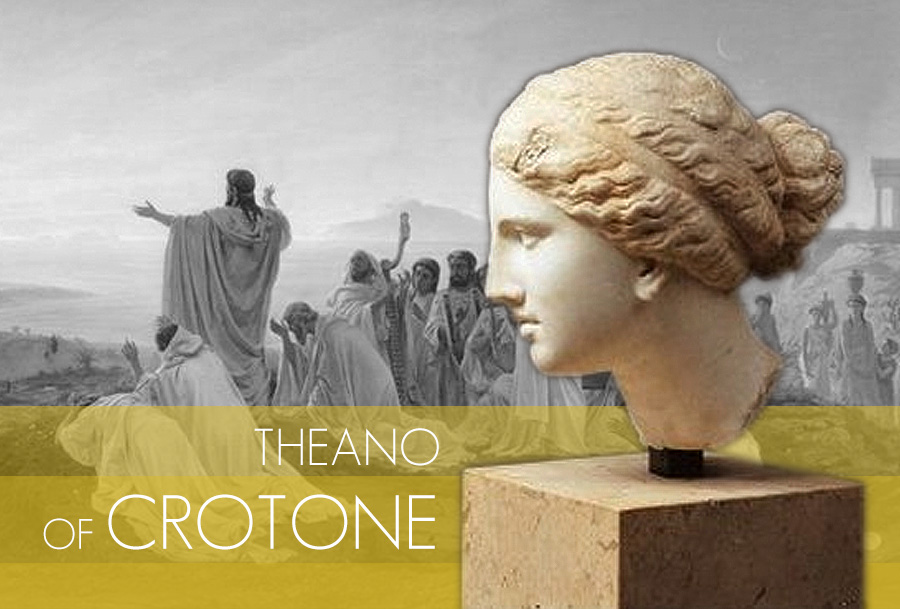The First Female Philosopher to Lead the Pythagorean School: Who is Theano of Croton?
Theano of Kroton, who said "It is better to be a stray horse than a woman who does not think" and lived long before Hypatia, is considered the first female philosopher.

When you look at stories about ancient Greece, you notice that female scientists are not very common. However, there are some women who left a mark in their time that it is impossible not to mention them. Some names, such as Hypatia, are well-known today. However, a famous name that most people do not know is Pythagoras' wife Theano.
Pythagoras of Samos (582 – 500 BC) is one of the most influential and at the same time one of the most mysterious people in the field of mathematics. Since there are no primary sources, his life and work are shrouded in myths and legends. What is certain is that Pythagoras ushered in the first golden age in mathematics.
Theano was a 6th-century BC Pythagorean philosopher. She has been called the wife or student of Pythagoras, although others see her as the wife of Brontinus. Her place of birth and the identity of her father is uncertain as well. Many Pythagorean writings were attributed to her in antiquity, including some letters and a few fragments from philosophical treatises, although these are all regarded as spurious by modern scholars.
It is also known that he founded an interesting school of philosophy, where studies were conducted on a wide variety of subjects and he educated many students. It is also known that this man, who has extraordinary intelligence, made a lucky marriage.
Theano of Croton Was to Be Pythagoras' Muse
Theano was born around 546 BC, probably in Crete. Although her early life is not well known, it is believed that she was the daughter of the Orphic Brontinus. His father was a member of a religious group focused on the cult of Osiris. This group believed in reincarnation. Today, it is possible to find traces of this belief in Pythagorean philosophy. This suggests that Theano may have motivated her husband in many ways.
At the end of twenty years of travels, Pythagoras had assimilated all the mathematical rules in the known world of that time. Finally, he sailed towards his home island of Samos in the Aegean Sea. He aimed to establish a school where he could transfer the knowledge he learned. However, over the years, the tyrant Polycrates had turned Samos, which was once a free country, into an intolerant and conservative society.
He then went to southern Italy, which is part of Greece and settled in Croton. There he got lucky and thus the Pythagorean Brotherhood was established. Theano and his father, whom Pythagoras probably met during his travels, were also included in this school. Pythagoras was 56 years old at that time. Theano was much younger, but also full of passion for science. They got married in a short time.
Over time, their home became a place where they established a school focused on philosophy, mathematics, and nature. Theano had five children with Pythagoras, two sons, and three daughters. One of the sons was named Telauges and the daughters were Damo, Myria, and Arginote. The name of his second son was forgotten over the years.
The students of this school not only listened and understood his teachings. They also made important contributions to mathematics with new ideas and proofs. The Pythagorean Brotherhood was an egalitarian school. The school also included female students. After the establishment of the school, Pythagoras coined the word philosopher and thus defined the purpose of his school.
Unfortunately, Pythagoras' rising power brought about his death. When the school took control of the Croton government, the locals decided to destroy it. On the darkest day in Theano's life, her husband and many other teachers and students were killed. Afterwards, many hoped that Theano would give up and return to Crete. However, it did not happen as expected.
Theano would continue the school with the support of his children. At this point, one of his daughters, Damo, would take on the task of protecting the work of her father and the other students. Thanks to these efforts, Pythagoras' school survived for at least 200 years after the great mathematician's death. Theano died around the 5th century BC.
What Do We Know About Theano's Work?
Theano's actual position in the Pythagorean School is not known with certainty. However, researchers think they have important work to do. Today, we know that the works said to have been written by Pythagoras were written by more than one author. However, since none of his original written works have survived, we cannot find definitive answers.
However, from some analyses, it is accepted that Theano of Croton wrote many treatises on medicine, physics, mathematics, and psychology. Her works were perhaps well known to Hypatia of Alexandria and other women who followed the path of science in ancient times. If more details about his life are discovered in the future, it will be possible for his biography to be completed and for him to gain the recognition he deserves.
